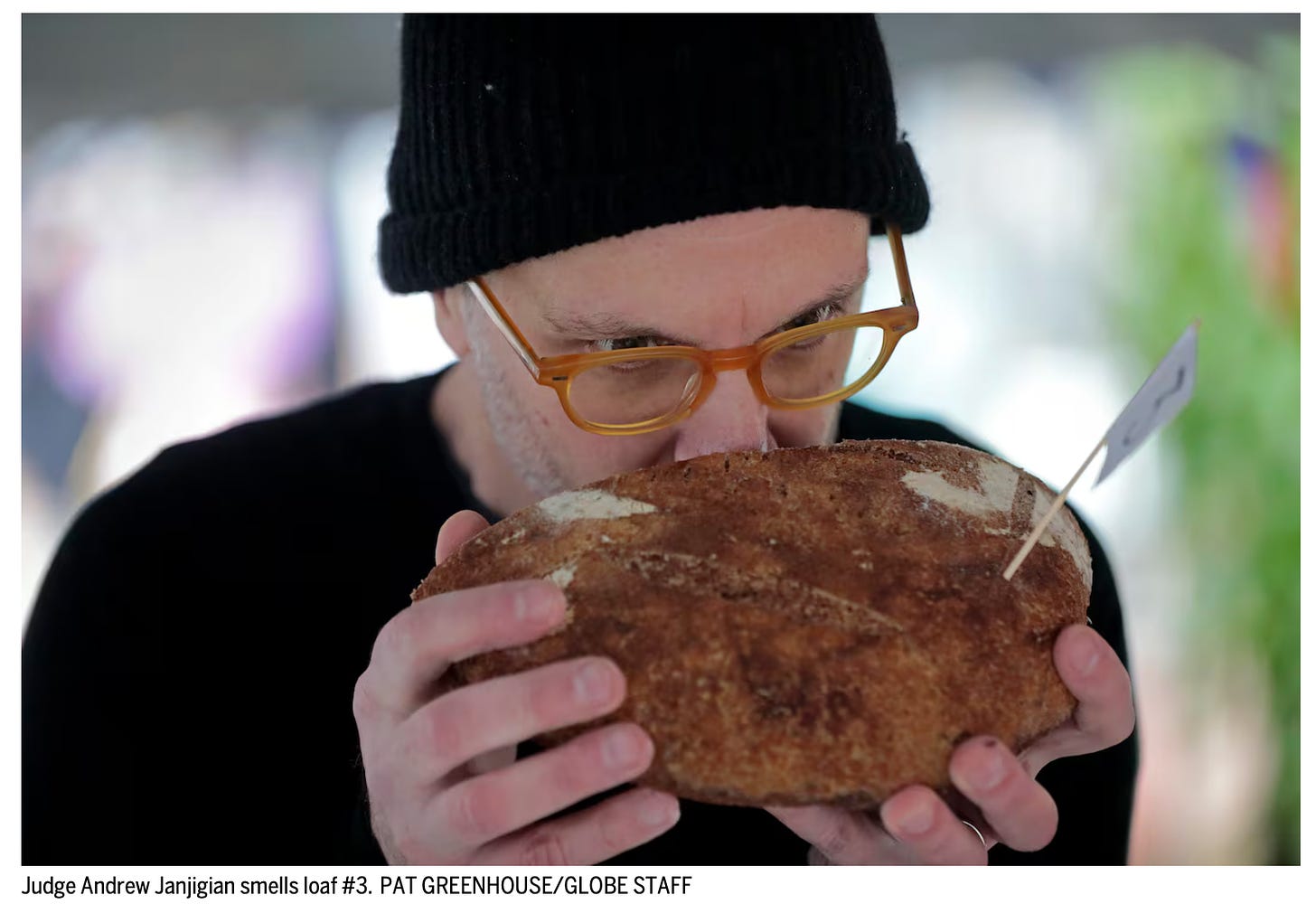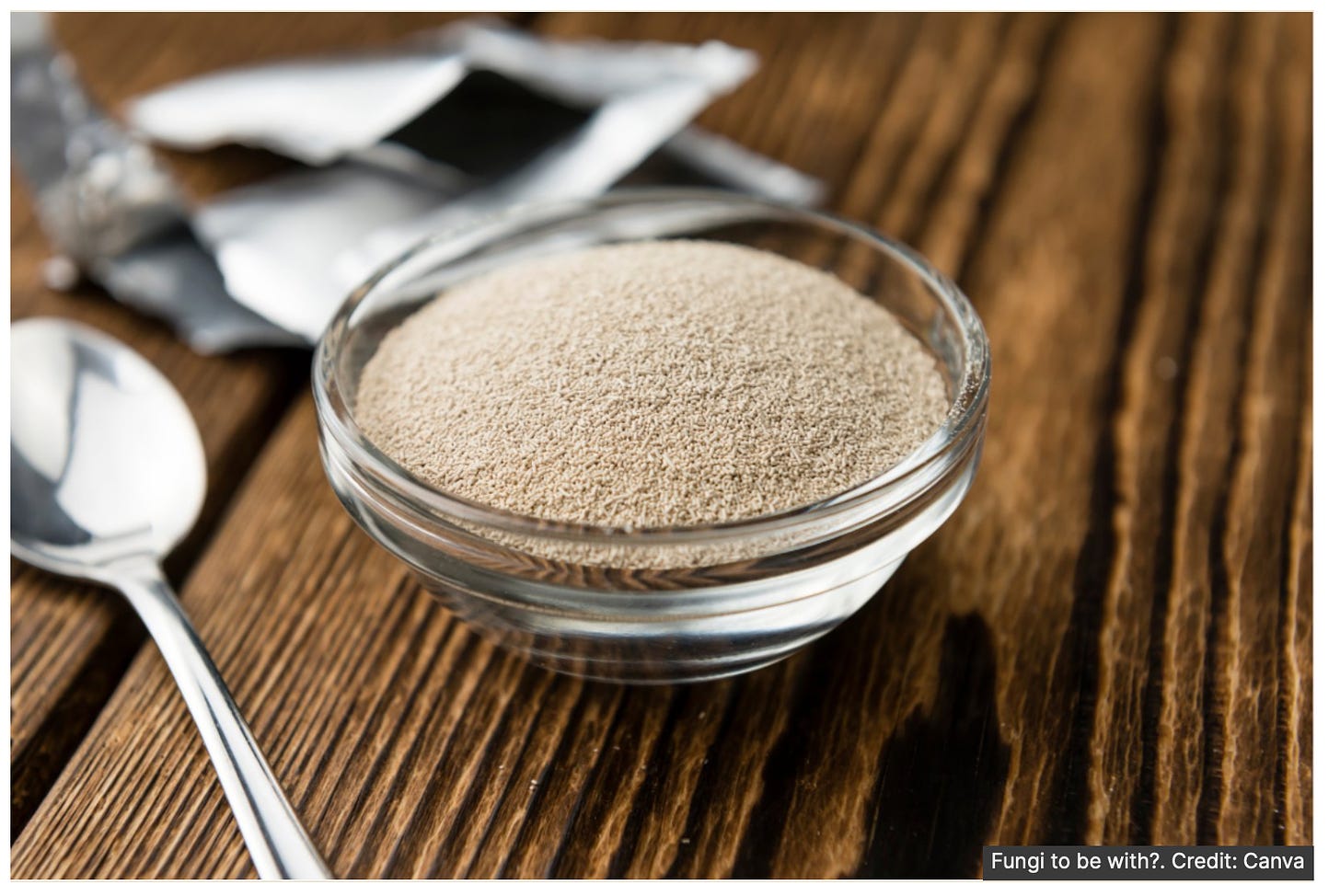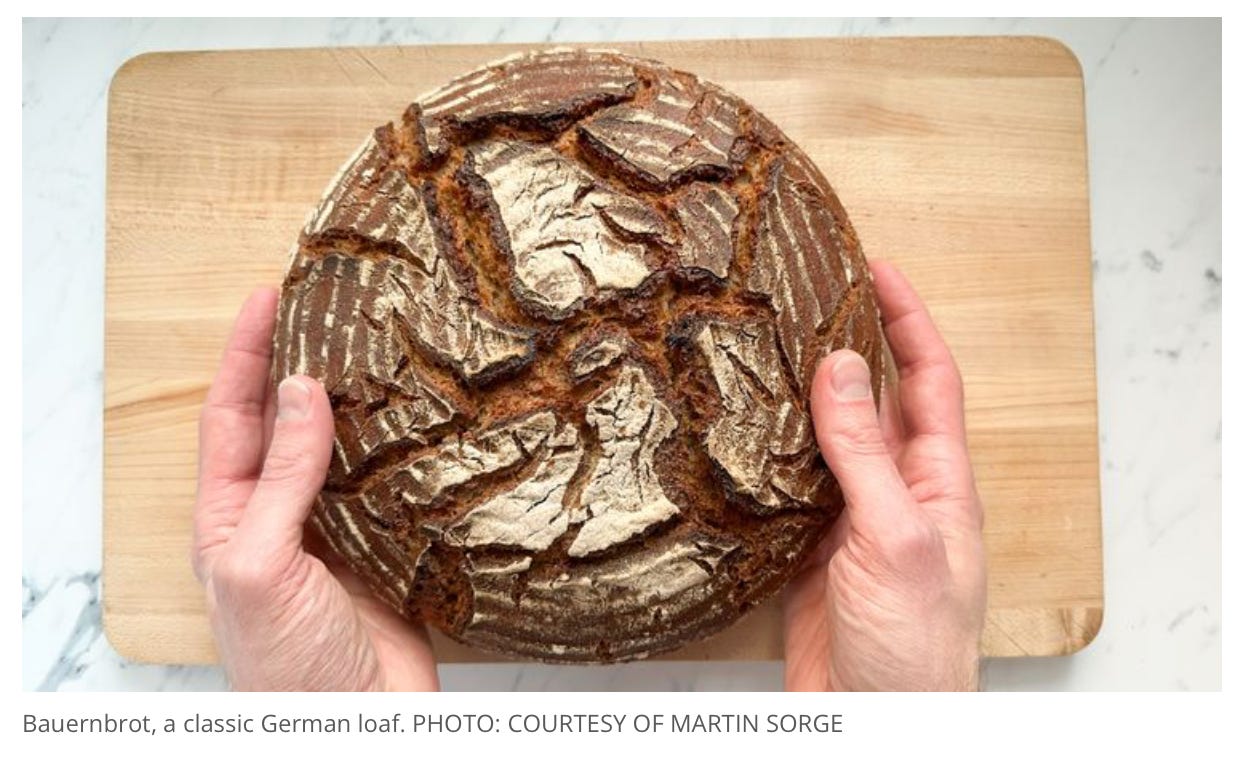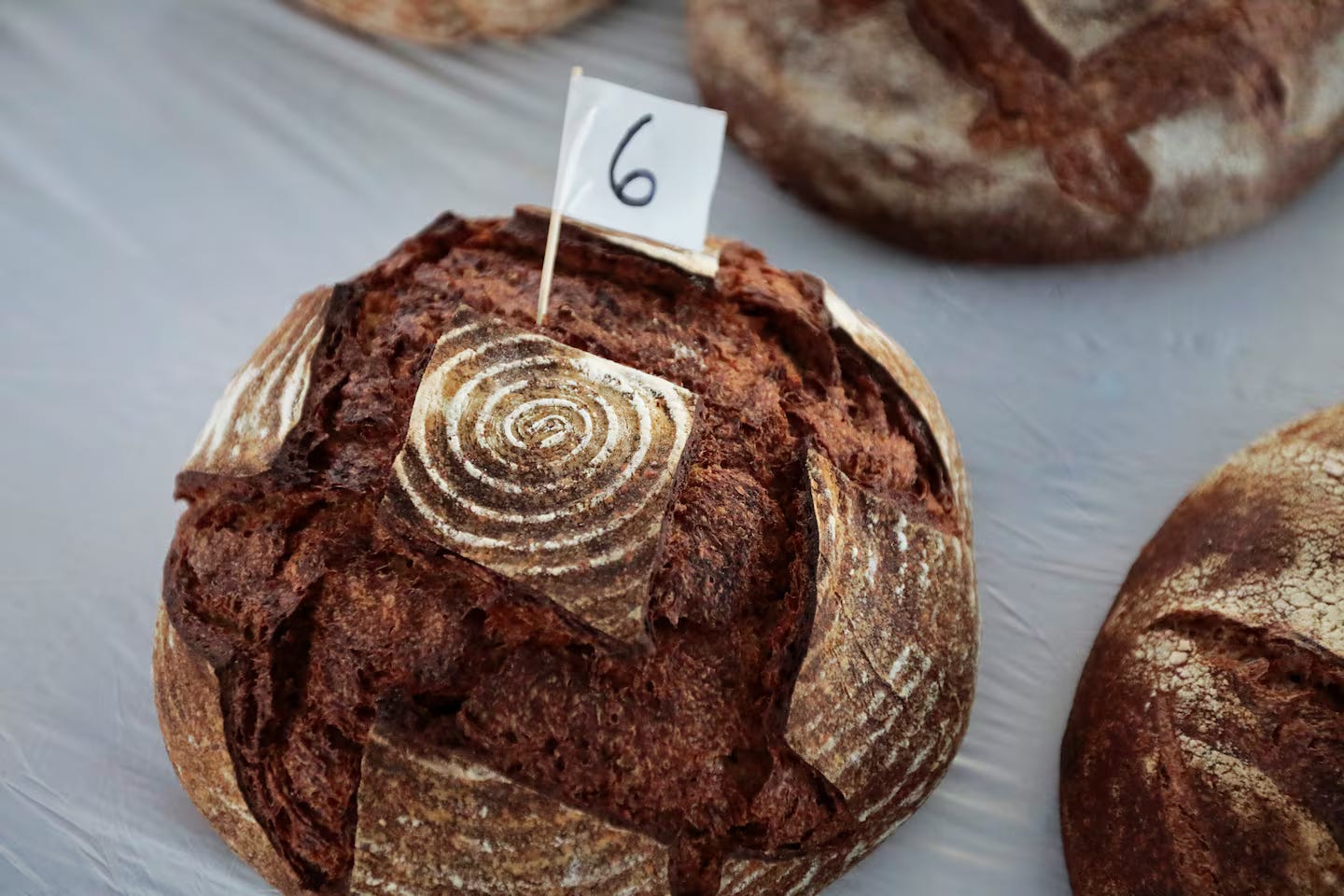Hello from the Wordloaf Friday Bread Basket, a (currently) biweekly roundup of links and items relating to bread, baking, and grain. I’m back in the weeds with my book right now, so am going to stick to an every-other-week for the basket for the time being.
Yeast of Eden
The Real Bread Campaign is a U.K. program(me) to promote the production of breads made “without chemical raising agents, so-called processing aids or any other additives.” They recently wrote about the increasing difficulty of sourcing additive-free dried yeast:
When the Real Bread Campaign started in 2008, two brands of additive-free, dried active yeast were widely available in the UK. They are no more. (See updates below).
In April 2024, the Campaign searched for additive-free dried active and fast acting (also known as quick, instant, easy bake etc.) yeast available in the UK.
Of nearly 30 products found, 27 (90%) contained one or more additives.
In three cases (Aldi the Pantry, Co-op amd McDougalls) the ingredients list was as long as: yeast (94%), stabiliser (calcium sulphate), emulsifier (sorbitan monostearate), flour treatment agents (ascorbic acid, alpha amylase), salt, wheat flour, wheat flour (with added calcium, iron, niacin, thiamin), wheat starch.
The post prompted a lively discussion on the BBGA email list about additives in dried yeast here in the U.S., and it seems that one of the most common ones is ascorbic acid (aka Vitamin C), which is also a dough strengthener. (It’s present in virtually all brands of instant dry yeast, and some active dry yeasts.)
Nobody is quite sure why it is there; maybe it’s to protect the yeast from oxidative stress to keep it viable, or perhaps to increase the strength of the dough to counteract the gluten-softening effects of glutathione from dead yeast cells. But whatever the reason, it’s certainly present in amounts that could have a dough-strengthening effect, and it made me wonder whether it could account for why fast-proofing doughs made with large amounts of dried yeast often tend to be “bucky,” meaning they are elastic and hard to shape. I’ve recently been playing around with fresh yeast (which should be additive-free), and though I haven’t done a side-by-side test yet, I have noticed doughs made with it seem quite extensible.
Bread enthusiast
For Food & Wine, baker Martin Sorge wrote about a German program to train bakers to discern and describe the flavors and textures of breads like a wine sommelier might do for a pinot noir:
Most of the students accepted into the sommelier program are already master bakers. But similar to how a winemaker might not know how to best communicate the nuances of their wine to customers or the broader public, bakers might lack the right language to describe their bread.
During the year-long course, which includes a week of in-person classes in Germany and monthly virtual classes, students build a vocabulary called the Weinheim Bread Language for describing bread’s appearance, aromas, and flavor.
That means they spend a lot of time analyzing the crust, crumb, texture, and color of bread. Then they smell it, squishing loaves like bellows and shoving slices right up to their nose like an oenophile nosing a glass. Finally, they taste the bread to assess its flavor and mouthfeel.
Judging Ami(che)
A few weeks ago I was a judge in an amateur baking competition as part of the Elmendorf Baking Supplies East Cambridge Parisian Street Fair, for which I had to sample 50 miches. One of my four fellow judges was Boston Globe food writer Sheryl Julian, and she wrote a story about the competition for the paper this week:
Each had to be made in a home kitchen, either in a freeform shape or baked in a Dutch oven, but not in a loaf pan. Weight had to fall between 1,000 and 1,600 grams (2.2 to 3.5 pounds). That’s a very large loaf; much larger than most home bakers are used to. At least 50 percent of the flour had to be unsifted whole-grain from a local mill. Elmendorf mills 23 New England and New York grains on site, which accounts for the deep interest in bread and willingness to host. Each entry had to arrive with an ingredient list and contestants had to live in Massachusetts or within 60 miles of Boston. The entry fee for contestants was $35, which covered the entire day’s festivities, including a lively Parisian street fair along Cambridge Street, which was bustling once the rain stopped and the sun appeared.
Judges rated aspect (appearance), crumb, flavor and aroma, and bake quality (whether the loaf was properly cooked). On scoring sheets, we graded each category from 1 to 5; staff tallied the results.
Sheryl interviewed each of the other judges—including chef Jason Bond, Gastropod Podcast co-host Cynthia Graber, and author Maria Speck, et moi—and naturally I had lots to say on the experience.
(Here’s an alternative link in case you can’t get over the paywall.)
That’s it for this week’s bread basket. Have a peaceful weekend everyone, see you all next week.
—Andrew












Thanks for sharing the Globe article about the street fair and bread baking contest. Too bad they didn't mention the 2nd and 3rd place winners, or that Daisy Chow from the Breadboard in Arlington won the baguette contest.
I've been baking with fresh yeast whenever possible for the past few years, and now it's my preferred yeast when I can get my hands on it. It's been a game-changer for me with enriched dough. I was told that since fresh yeast hasn't undergone the stress of drying, it works better and faster in those doughs. I did side-by-side tests with my Stollen recipe, and the fresh yeast version had significantly more volume and better texture (although it's a dense loaf anyway).